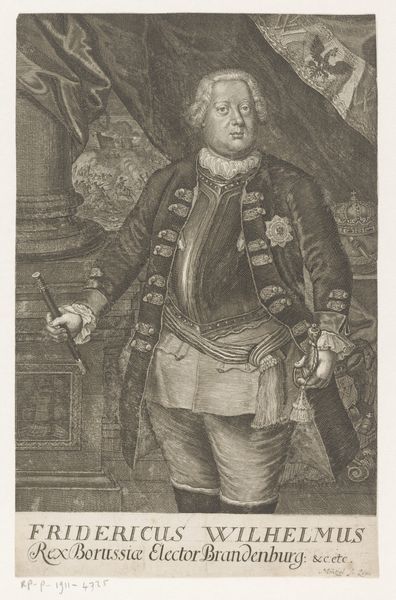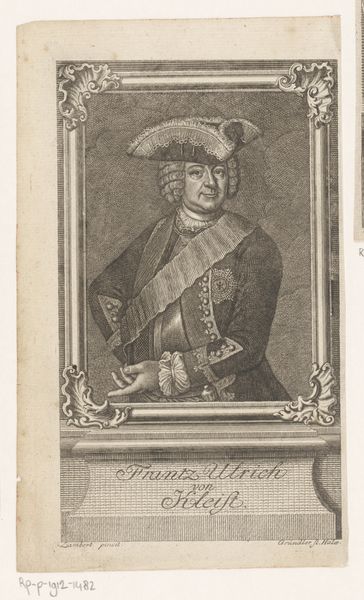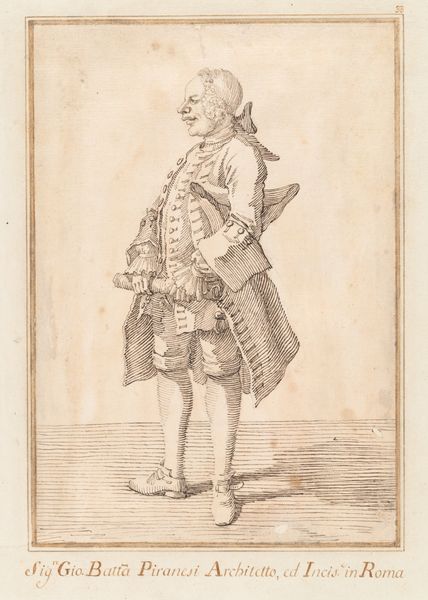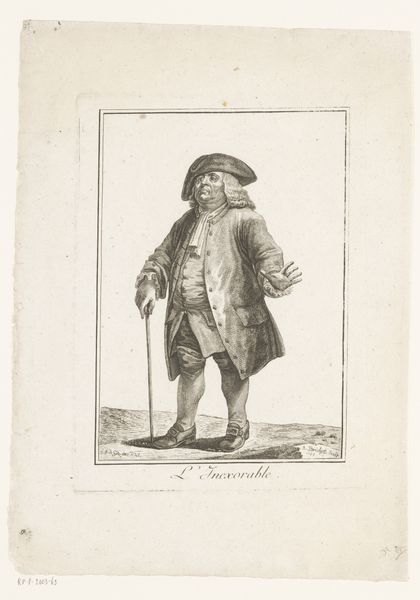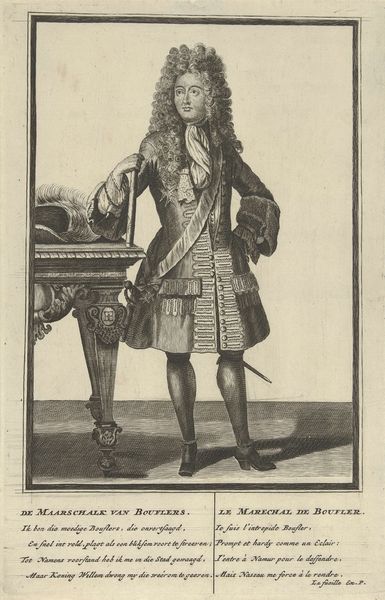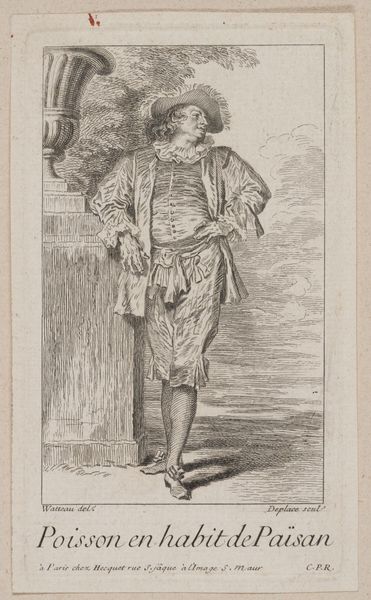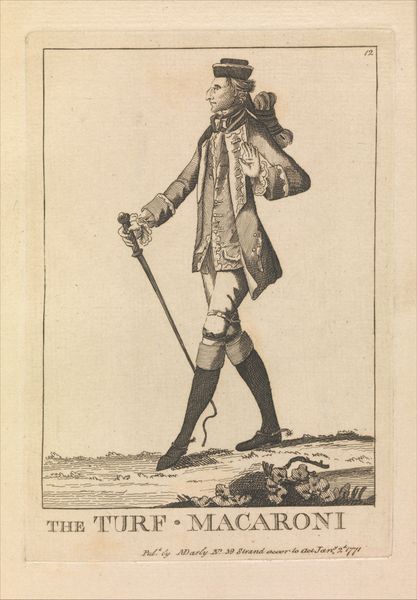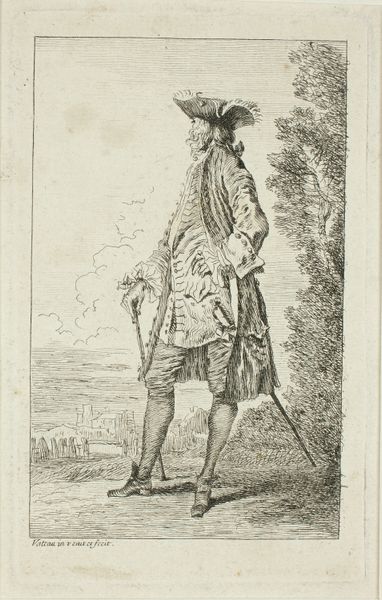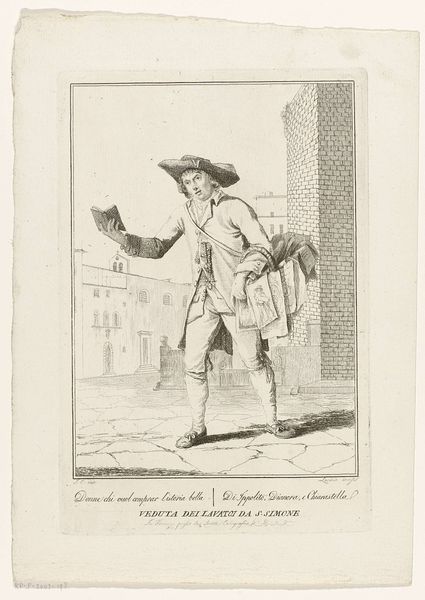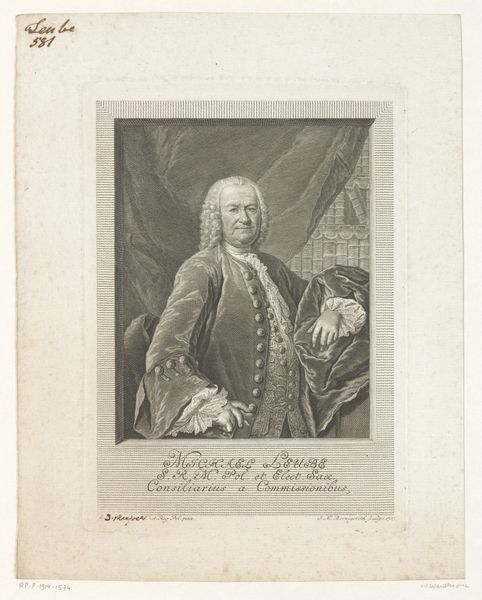
Dimensions: height 166 mm, width 100 mm
Copyright: Rijks Museum: Open Domain
Curator: I’m struck by the incredible detail achieved in this engraving. The fine lines must have taken considerable skill and time. It is entitled "Portret van Frederik II van Pruisen," made sometime between 1740 and 1786 and currently held at the Rijksmuseum. The engraver was Gottlieb Leberecht Crusius. Editor: The starkness of the monochrome combined with the clear delineation of lines conveys the gravitas expected of royalty. However, this piece has an austerity which hints at the disciplined life expected of Frederick II and a militaristic rigidity perhaps imposed on those under him. Curator: Absolutely, the medium of print, specifically engraving, lent itself to widespread reproduction and dissemination. Consider how that accessibility challenged aristocratic notions of portraiture. By allowing more people to own images of their ruler, even in such a stylised form, engraving created its own visual politics of power. Editor: Which certainly shaped public perception! There is a clear propagandistic aspect in how it renders Frederick: powerful yet benevolent. But knowing what we do about Prussian militarism during his reign, how should we unpack that contrast between appearance and the documented brutal realities, including the exploitative economic system in place? Curator: The materials also deserve our attention. The quality of the paper, the ink used, and the very printing plates speak to industrial networks in place, the workshops which were operating throughout Europe during this period. I suspect the materials reveal links to the colonial exploitation that often powered such luxury productions. Editor: And how did images like this consolidate Frederick’s position within a European landscape steeped in colonialism? While promoting Enlightenment ideals, how complicit was Prussia itself within these global power dynamics of colonialism and slavery? Can this image offer insight into gender inequality and what masculinities were imposed at the time? Curator: This is an intriguing idea! What can we reveal about this engraving when viewed as the production of luxury intended for wide circulation—intended both to consolidate domestic support and project international standing? Editor: Viewing it as such helps move it beyond a mere representation of power and compels it into being a statement about the politics, production, and structures of eighteenth-century European power itself. We have been shown the man but not yet considered what made that showing so compelling.
Comments
No comments
Be the first to comment and join the conversation on the ultimate creative platform.
